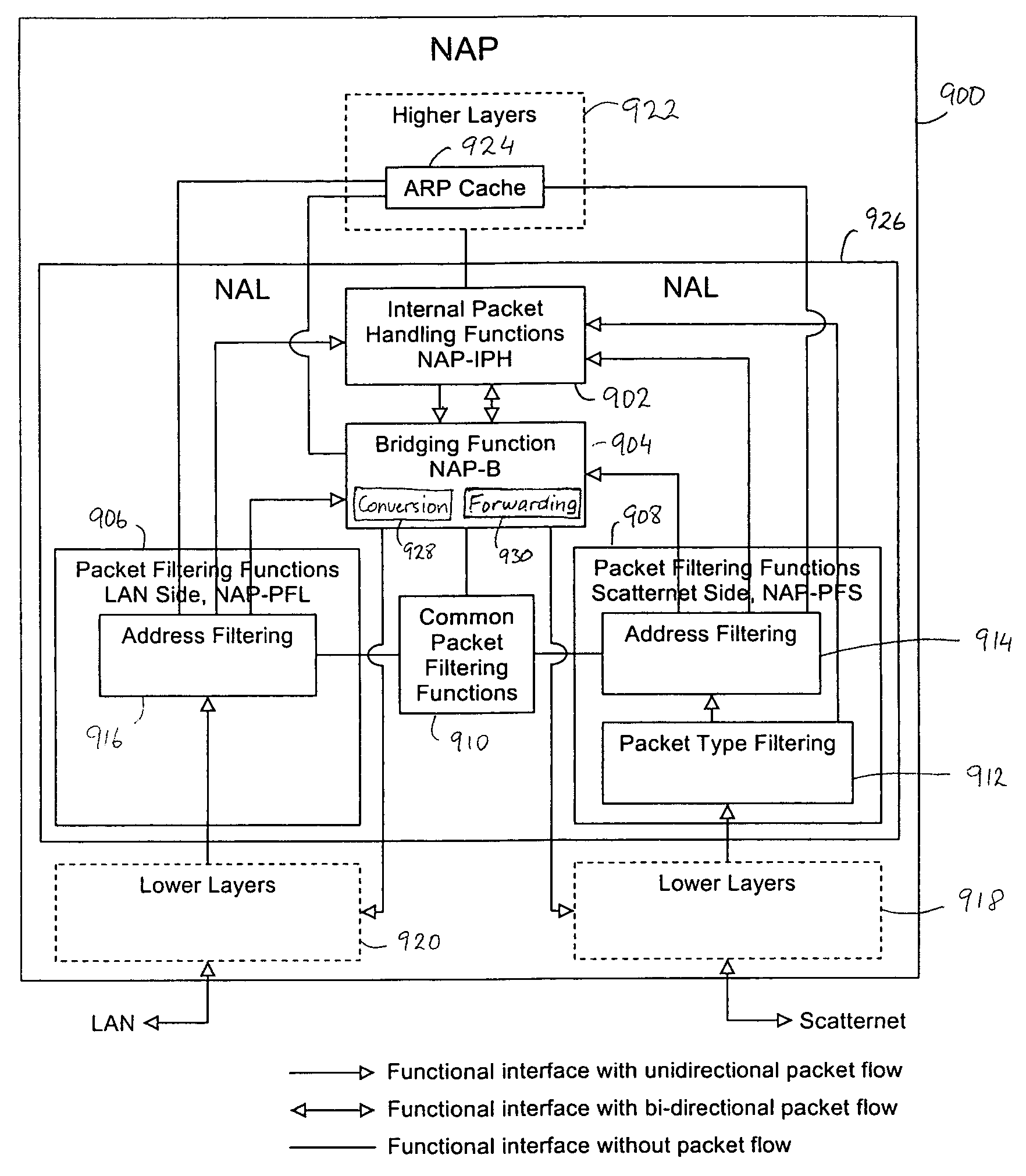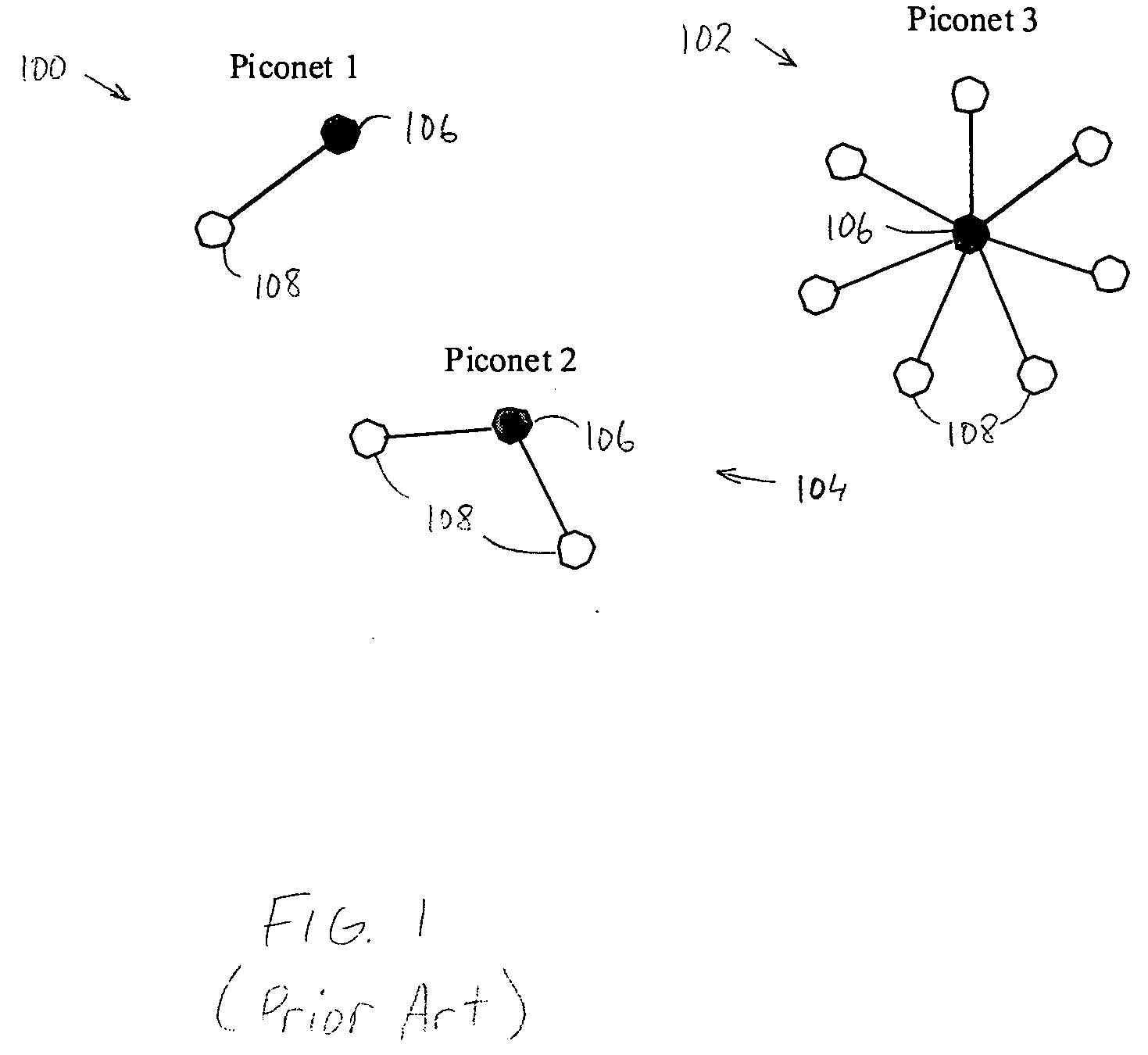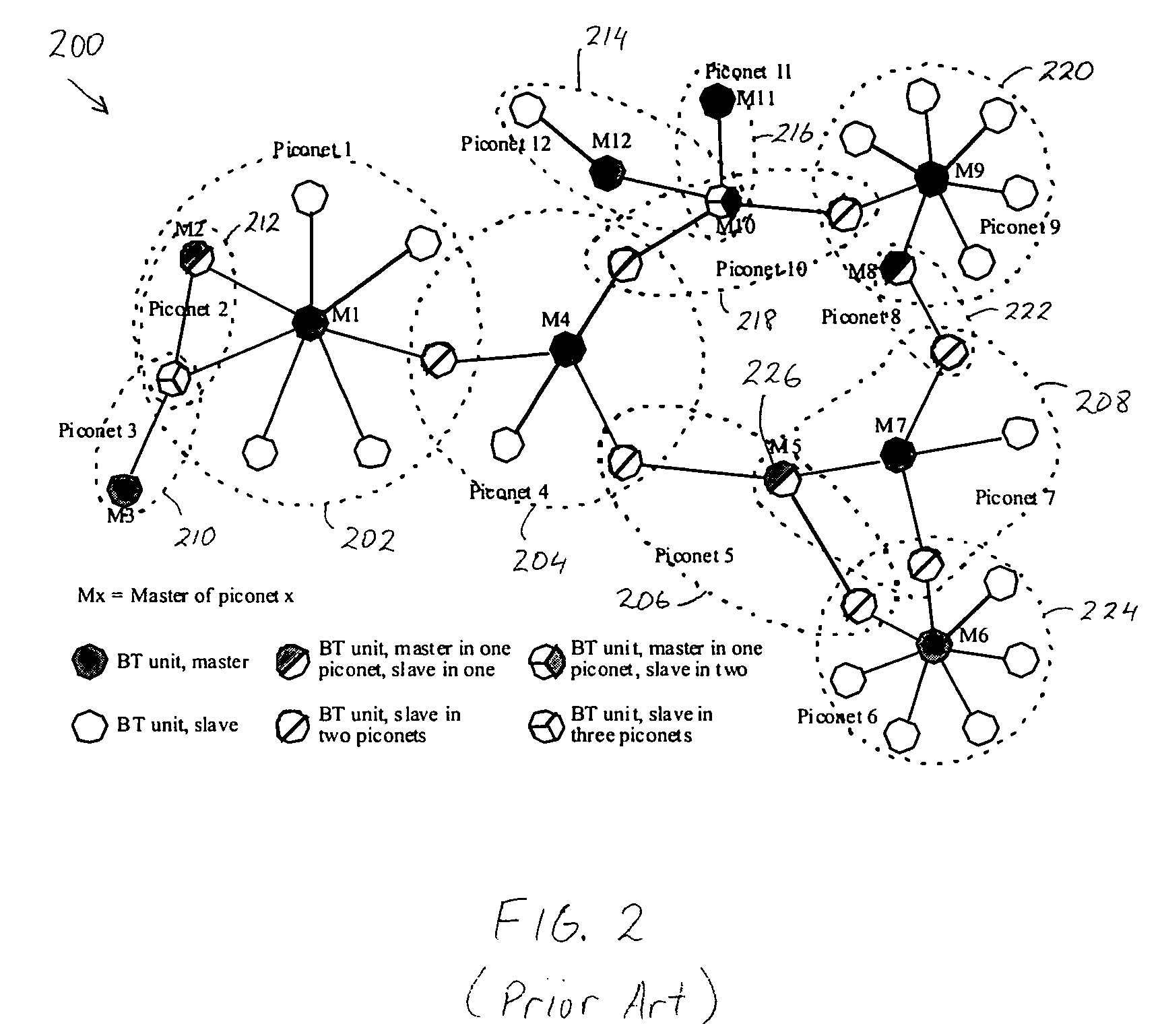Bridging between a Bluetooth scatternet and an Ethernet LAN
a bluetooth scatternet and ethernet lan technology, applied in the field of bluetooth networks, can solve the problems of direct communication between slaves, no way for slaves to send data to another slaves in a piconet, no way to address and route packets
- Summary
- Abstract
- Description
- Claims
- Application Information
AI Technical Summary
Problems solved by technology
Method used
Image
Examples
Embodiment Construction
[0066] Embodiments of the invention provide a system and method for bridging a Bluetooth scatternet and an Ethernet LAN. Although the system and method of the invention includes a number of functional features and components, the primary components of the invention are: a packet conversion and forwarding mechanism; a packet filtering mechanism; Administrative Domains (ADs) and NAP Service Areas (NAPSAs); and an Inter-NAP protocol (INAPP). Each of these components will be introduced briefly here, then discussed in more detail below along with the other features and components of the invention.
[0067] The first main component, the packet conversion and forwarding mechanism, requires the NAP to convert and forward the packet traffic between the nodes in the scatternet and the nodes on the LAN, and vice versa. Conversion is needed because on the LAN side, data is transported in Ethernet packets (also known as Ethernet frames), while on the scatternet side, data is transported in NAL pack...
PUM
 Login to View More
Login to View More Abstract
Description
Claims
Application Information
 Login to View More
Login to View More - R&D
- Intellectual Property
- Life Sciences
- Materials
- Tech Scout
- Unparalleled Data Quality
- Higher Quality Content
- 60% Fewer Hallucinations
Browse by: Latest US Patents, China's latest patents, Technical Efficacy Thesaurus, Application Domain, Technology Topic, Popular Technical Reports.
© 2025 PatSnap. All rights reserved.Legal|Privacy policy|Modern Slavery Act Transparency Statement|Sitemap|About US| Contact US: help@patsnap.com



